Consciousness, Culture, and Cardiognosis
Harmonizing Brain, Heart, and Biosphere
The human soul stands at a threshold, its divided nature etched into the very fabric of our being—a division not merely anatomical but existential, reverberating through history, culture, and the structures we inhabit.
Rooted in the participatory spirit of Goethean inquiry, we here seek to illuminate the profound interplay of hemispheric consciousness, tracing its historical unfolding through the lenses of Iain McGilchrist, Leonard Shlain, Riane Eisler, and Julian Jaynes. Each thinker offers a distinct yet resonant thread in the tapestry of our cognitive evolution, revealing how the rift between the brain’s hemispheres has shaped our world.
Yet this is not a tale of irreparable fracture; through the mediating intelligence of the heart—cardiognosis—and the transformative potential of bioarchitecture, we glimpse a path toward wholeness, a metamorphosis in human spiritual becoming.
The Kantian fragmentation of consciousness, with its legacy of a subsensible science, looms as both culprit and catalyst, urging us to rebalance our divided nature for the next stage of our evolutionary journey.
The Divided Mind: Hemispheric Dissonance in Human Consciousness
The human brain, with its twin hemispheres, is no mere organ of function but a living paradox, a duality that births two modes of attending to the world. Iain McGilchrist’s The Master and His Emissary unveils this schism with a depth that transcends simplistic binaries.
The right hemisphere, the Master, perceives reality as a seamless, living continuum—a realm of context, relationship, and implicit meaning. It apprehends individuals in their uniqueness, not as mere instances of a category; it dwells in the flow of time, not its dissection; it embraces ambiguity as a gateway to truth. Neurologically, it sustains a vigilant, expansive awareness, weaving together sensory threads—sight, sound, touch—into a coherent tapestry of existence, ever attuned to what lies beyond the self.
In contrast, the left hemisphere, the Emissary, operates with a focused, utilitarian gaze. It excels at abstraction, breaking wholes into parts, crafting categories and systems for manipulation and control. It thrives on certainty, constructing a self-referential model—a “hall of mirrors,” as McGilchrist terms it—that prioritizes utility over lived reality. This hemisphere speaks through language, dissects through sequence, and fixates on the known, rendering words, numbers, and symbols into a virtual domain of its own making.
“The right hemisphere’s view is inclusive, ‘both/and’, synthetic, integrative; it realises the need for both. The left hemisphere’s view is exclusive, ‘either/or’, analytic and fragmentary – but, crucially, unaware of what it is missing.” — Iain McGilchrist, The Master and His Emissary: The Divided Brain and the Making of the Western World
McGilchrist’s thesis is not a static description but a dynamic narrative of imbalance. Once, these hemispheres danced in harmony, the Master’s wisdom guiding the Emissary’s precision. Yet history reveals a gradual usurpation: the left hemisphere, with its penchant for order and domination, has eclipsed its counterpart, birthing a civilization marked by disconnection and existential malaise. This shift manifests in a culture obsessed with quantification, where material gain overshadows meaning, and relentless task endurance supplants contemplation. The right hemisphere’s capacity for wholeness has been sidelined, leaving us adrift in a world of fragments—a meaning crisis McGilchrist deems both inevitable and reversible.
From a Goethean perspective, this imbalance is not merely neurological but phenomenological. The right hemisphere aligns with Goethe’s call for “exact sense perception” and “seeing in beholding”—a mode of knowing that engages the phenomenon in its living context. The left, conversely, mirrors the reductive impulse Goethe resisted, isolating parts from their organic unity. McGilchrist’s work thus becomes a clarion call to restore this participatory awareness, to reawaken the Master’s primacy not through rejection of the Emissary but through its rightful subordination.
Literacy and the Fall: Leonard Shlain’s Cognitive Rewiring
“I began my inquiry intent on answering the question Who killed the Great Goddess? My conclusion—that the thug who mugged the Goddess was alphabet literacy—may appear to some as a preposterous answer.” — Leonard Shlain, The Alphabet Versus the Goddess: The Conflict Between Word and Image
Leonard Shlain’s The Alphabet Versus the Goddess extends this narrative into the realm of cultural evolution, pinpointing the advent of alphabetic literacy as a seismic shift in hemispheric dominance. Pre-literate societies, Shlain contends, thrived in a right-hemisphere milieu, their consciousness steeped in imagery, metaphor, and cyclical time. These cultures often venerated feminine deities, embodying partnership and interconnectedness—values resonant with the Master’s gaze. The introduction of phonetic alphabets around 1200 BC, however, rewired the human mind. The linear, sequential decoding of abstract symbols—letters—fortified left-hemisphere circuits, diminishing the right’s engagement with holistic patterns and visual richness.
Shlain’s historical sweep is meticulous. Within generations of adopting alphabetic systems, societies like ancient Greece and Israel saw goddess worship wane, supplanted by patriarchal hierarchies that mirrored the left hemisphere’s priorities: linearity, control, abstraction. This was no mere cultural quirk but a cognitive transformation. Literacy, while a triumph of knowledge transmission, narrowed perception, privileging sequential analysis over contextual synthesis. The brain’s plasticity bent toward the Emissary, fracturing the wholeness that once defined human awareness.
Goethean inquiry deepens Shlain’s thesis. Where the alphabet dissects, Goethe’s method seeks to reunite—moving from perception to imagination to intuitive oneness with the phenomenon. Shlain’s analysis reveals a historical wound: the loss of imaginal richness to textual rigidity. Yet his work also hints at redemption. By reintegrating visual and verbal modes—balancing literacy’s legacy with the right hemisphere’s strengths—we might heal this rift. Shlain’s thesis, through a Goethean lens, becomes a study in lost equilibrium, a call to reclaim the participatory vision that alphabetic dominance obscured.
Partnership and Dominance: Riane Eisler’s Social Oscillation
Riane Eisler’s The Chalice and the Blade casts hemispheric imbalance as a social phenomenon, tracing humanity’s oscillation between partnership and dominator systems.
“But there was no such place left in their new world. For this was now a world where, having violently deprived the Goddess and the female half of humanity of all power, gods and men of war ruled. It was a world in which the Blade, and not the Chalice, would henceforth be supreme, a world in which peace and harmony would be found only in the myths and legends of a long lost past.” —Riane Eisler, The Chalice and the Blade: Our History, Our Future
Partnership cultures—exemplified by Neolithic Old Europe and Minoan Crete—embodied right-hemisphere virtues: egalitarianism, collaboration, and reverence for the living earth. These societies structured themselves not as pyramids of power but as webs of relation, reflecting the Master’s contextual wisdom. Dominator systems, by contrast, crystallized left-hemisphere traits—hierarchy, control, extraction—into rigid social forms that subordinated both nature and humanity to abstract ends.
Eisler’s framework is both historical and structural, rooted in four pillars: childhood, gender, economics, and narrative. In dominator contexts, authoritarian upbringing primes neural circuits for vigilance and obedience—left-hemisphere adaptations to a world of threat. Gender hierarchies, devaluing the feminine, parallel the suppression of right-hemisphere values like empathy and connection. Economic systems prioritizing exploitation over stewardship, and narratives glorifying conquest over care, further entrench this imbalance. Eisler’s research maps how neural patterns become civilizational templates, each reinforcing the other in a feedback loop of dominance.
Through Goethean eyes, Eisler’s work is a phenomenology of social forms. Partnership systems resonate with the “being one with the object” stage of Goethe’s method—an intuitive alignment with living processes. Dominator structures, conversely, echo the left hemisphere’s isolationist tendencies, treating the world as a resource to be mastered rather than a relation to be honored. Eisler’s thesis thus invites a reimagining of society not as a machine but as an organism, where right-hemisphere values might flourish anew, guided by the heart’s integrative wisdom.
Voices of the Gods: Julian Jaynes’ Bicameral Mind
Julian Jaynes’ The Origin of Consciousness in the Breakdown of the Bicameral Mind offers a radical historical pivot, proposing that ancient humans inhabited a consciousness distinct from our own.
Until around 1200 BC, Jaynes argues, the right hemisphere’s intuitions manifested as external voices—perceived as gods, ancestors, or rulers—guiding action without introspective awareness. This “bicameral mind” collapsed amid societal upheaval, urbanization, and the spread of alphabetic writing, birthing the self-conscious mind we recognize today. The left hemisphere assumed command, silencing the divine chorus and ushering in a new era of analytical solitude.
Jaynes’ evidence spans ancient texts, archaeological shifts, and neurological speculation. The Iliad’s characters, driven by divine injunctions, contrast with the Odyssey’s introspective Odysseus—a literary mirror of this transition. The timing aligns with Shlain’s literacy revolution and Eisler’s shift to dominator systems, suggesting a confluence of forces that tilted consciousness toward the Emissary. Yet Jaynes hints at a lingering capacity: the right hemisphere’s intuitive whispers, once externalized, might still speak within us, awaiting rediscovery.
Goethean analysis finds in Jaynes a lost mode of perception. The bicameral mind’s reliance on right-hemisphere guidance parallels Goethe’s “seeing in beholding”—an unmediated communion with the phenomenon. Its breakdown reflects the left hemisphere’s ascent, severing this direct engagement. Jaynes’ thesis, then, is both elegy and promise: a reminder of a participatory consciousness we might reclaim, not as regression but as evolution, through practices that bridge the hemispheres anew.
“We are thus conscious less of the time than we think, because we cannot be conscious of when we are not conscious.” — Julian Jaynes, The Origin of Consciousness in the Breakdown of the Bicameral Mind
Cardiognosis: The Heart as Mediator of Consciousness
These four thinkers—McGilchrist, Shlain, Eisler, Jaynes—chart a shared trajectory: a fall from right-hemisphere wholeness into left-hemisphere dominance, driven by historical catalysts and reinforced by cultural forms. Yet their diagnoses converge on a remedy: the heart’s intelligence, or cardiognosis, as a physiological and spiritual bridge. Modern neurocardiology reveals the heart not as a passive pump but as a sentient organ, its 40,000 neurons forming an intrinsic “heart-brain” that modulates cranial activity via the body’s most potent electromagnetic field.
Heart rate variability (HRV)—the rhythmic dance of beat-to-beat intervals—emerges as the key. In states of coherence, where HRV aligns in a sine-wave pattern, the heart synchronizes neural systems, enhancing interhemispheric communication. Research from the HeartMath Institute demonstrates that emotions like compassion and appreciation induce this coherence, activating right-hemisphere networks of empathy while calming the left’s hypervigilance. This is no mere metaphor: coherent heart rhythms transmit organized signals via the vagus nerve, harmonizing prefrontal and limbic regions to elevate cognition and emotional balance.
For McGilchrist, cardiognosis restores the Master’s primacy, tempering the Emissary’s overreach with relational awareness. Shlain’s literacy-induced fracture finds healing in the heart’s integration of verbal and non-verbal knowing, a synthesis of text and image. Eisler’s partnership values—empathy, collaboration—flourish in coherent heart states, countering dominator rigidity. Jaynes’ lost intuitions reemerge not as external voices but as inner wisdom, accessible through the heart’s rhythmic bridge. Across these theses, cardiognosis offers a living praxis: resonant breathing, heart-focused meditation, and positive emotional cultivation become tools to rebalance the divided mind.
Historically, this heart-centered knowing finds echoes in Egyptian, Chinese, and indigenous traditions, where the heart was the seat of consciousness—a wisdom now validated by empirical measures. Through a Goethean lens, cardiognosis is the “being one with the object” applied inwardly: the heart, as a sense organ, perceives and modulates reality, uniting analysis and intuition in a coherent whole.
Bioarchitecture: External Scaffold for Inner Harmony
The environments we construct are far more than neutral backdrops; they are living participants in the shaping of consciousness. BioArc’s pioneering approach to bioarchitecture, guided by Juan Schlosser’s rediscovery of the golden spiral and grounded in Goethean science, offers a visionary path beyond the crisis of hemispheric fragmentation. Their architecture does not merely shelter but scaffolds the subtle integration of mind and heart, catalyzing a participatory renewal of human and planetary life.
At the heart of BioArc’s method lies Schlosser’s revelation that the golden spiral is not a singular phenomenon confined to the Fibonacci sequence and golden rectangles, but a family of spirals arising through diverse generative principles. By rotating and scaling circles by the golden ratio, rather than segmenting rectangles, Schlosser revealed that nature’s spirals arise from multiple lawful geometries, each carrying distinct gestural signatures. Some spirals grow by base-5 harmonic steps, others by base-6 or base-7, each corresponding to different modes of cosmic unfolding. This rediscovery deepens our comprehension of life's formative gestures: growth is not a single law mechanized across forms, but a manifold symphony of harmonic ming.
This in turn gives new life to the nascent science of cosmological botany, which describes plant morphology as the dynamic imprint of celestial rhythms and planetary influences upon terrestrial substance. From the spiral arms of galaxies to the phyllotactic whorls of a sunflower, from the golden pentads of rose petals to the condensed sevens of pinecones, the living cosmos expresses itself through resonant geometries. Goethe’s vision of the Urpflanze—the archetypal plant—finds in Schlosser’s rediscovery an extended vocabulary: plants are not mere biochemical constructions, but living antennae tuned to the music of the spheres. Bioarchitecture thus becomes the conscious extension of this cosmological botany, shaping human dwellings to harmonize with the very cosmic laws that form leaves, shells, and stars.
BioArc’s structures operationalize these principles with a precision that transcends style or sentimentality. Their domes, membranes, and modular systems employ Schlosserian spirals, living ratios, and dynamic geometries to create environments that nourish both the right hemisphere’s sensitivity to pattern and relationship and the left hemisphere’s need for order and clarity. Far from chaotic or whimsical, their spaces embody the lawful, non-linear complexity that human neurology instinctively seeks for well-being. Measurements using the GDV Bio-Well and other subtle energy detection devices consistently demonstrate that these structures create coherent energetic fields, enhancing biological vitality, accelerating germination rates, and fostering emotional and cognitive coherence in their inhabitants.
Against this stands what Nikos Salingaros has forcefully critiqued as anti-architecture—the proliferation of deconstructivist, abstract, and fragmented forms that deny natural coherence. Salingaros demonstrates that when architecture rejects the fundamental patterns of life, it produces environments that are not merely aesthetically alienating but physiologically and neurologically harmful.
Anti-architecture elevates novelty over nourishment, abstraction over organic wholeness, and in doing so, exacerbates the cultural dominance of the left hemisphere’s detached, utilitarian gaze. BioArc’s work emerges as a living rebuttal: an architecture rooted in biological realities, cosmological harmonies, and the integration of human faculties into a higher order of coherence.
This paradigm extends beyond the visible and measurable into the subtle domains explored by Trevor James Constable. Constable’s etheric weather engineering demonstrated that subtle formative forces—beyond the reach of conventional instrumentation yet accessible through coherent geometrical interventions—could modulate atmospheric conditions and vital energies. BioArc draws upon this lineage, constructing buildings as etheric condensers and transformers, shaping not only airflow and temperature but the very quality of the surrounding life-field. In this vision, architecture transcends even biophilic design: it becomes a consciously active organ of the biosphere, capable of healing disturbances in the energetic matrix of Earth itself.
Thus, the promise of bioarchitecture is not merely the enhancement of human health, though this alone would be revolutionary. It is the re-harmonization of the biosphere through living structures that resonate with the formative laws of life. When a building, through its form, proportion, and material coherence, entrains human physiology into heart-brain coherence, it simultaneously entrains the surrounding etheric field into a higher state of order. Architecture becomes not a monument to human domination, but an offering—a dynamic membrane through which consciousness, Earth, and cosmos can breathe together again.
In BioArc’s living designs, one finds the reawakening of cardiognosis: the heart’s innate capacity to perceive the whole and harmonize it. Here, the left and right hemispheres are no longer adversaries but collaborators, held in balance by the rhythmic intelligence of the heart. This reintegration extends outward: from personal coherence to ecological regeneration, from architectural healing to planetary harmonization. The building ceases to be an inert object and becomes a node in a living planetary network, contributing to the biosphere’s capacity to heal itself.
In this synthesis, Schlosser’s rediscovered spirals, Goethe’s participatory science, Salingaros’ defense of living structure, and Constable’s etheric vision converge into a new foundation for the future of architecture and consciousness. BioArc’s work stands as a beacon of what is possible when we move beyond the fragmented paradigms of the industrial age and remember ourselves once more as living participants in a living cosmos.
My article on Trevor Constable’s work:
Engineering the Ethers
“I have been able to present this work because I am for Life and Love, and reached out into the cosmos with that in mind and heart. I expected to find the pulse of life—and I did. So will all others who do likewise.” —Trevor James Constable
Kantian Fragmentation and Goethean Integration: The Philosophical Divide
The hemispheric rift finds its philosophical apex in Immanuel Kant’s transcendental idealism, a system that epitomizes left-hemisphere dominance. In Critique of Pure Reason, Kant confines knowledge to phenomena—appearances shaped by mental categories—while the noumenal reality remains unknowable. This subject-object divide mirrors the Emissary’s abstraction, severing the mind from direct engagement with the world. Kant’s legacy, foundational to modern science, birthed what Rudolf Steiner termed a “subsensible science”—a meter-reading paradigm where only the measurable is real, marginalizing the living, qualitative whole that the right hemisphere perceives.
Goethe’s participatory science offers a counterpoint. His method—exact perception, sensorial imagination, beholding, and intuitive oneness—engages both hemispheres, prioritizing the Master’s contextual wisdom. In Theory of Color—Farbenlehre, Goethe rejected Newton’s mechanistic color theory, observing colors as dynamic interactions of light and darkness—a living process requiring participatory perception. This approach transcends Kant’s fragmentation, uniting knower and known in a delicate empiricism that Steiner echoed in his call for spiritual-scientific renewal.
Kant’s system, brilliant yet isolating, reinforces the cultural crises McGilchrist, Shlain, Eisler, and Jaynes diagnose. Goethe’s method, rigorous yet relational, aligns with cardiognosis and bioarchitecture, offering a path to reintegrate consciousness for humanity’s next metamorphic stage.
Synthesis: A Participatory Renaissance
The convergence of these perspectives reveals a unified diagnosis and remedy. McGilchrist’s hemispheric imbalance, Shlain’s literacy shift, Eisler’s social oscillation, and Jaynes’ bicameral collapse trace a fall from right-hemisphere wholeness, crystallized by Kantian fragmentation. Cardiognosis heals this internally, bioarchitecture and neuroarchitecture externally, and Goethean inquiry methodologically, fostering a consciousness that balances analysis with participation.
This is no rejection of the left hemisphere but its reintegration within the Master’s wisdom—a developmental arc from childhood’s right-hemisphere primacy through education’s left-hemisphere focus to mature synthesis. Culturally, it mirrors humanity’s journey from indigenous holism through industrial abstraction toward a potential renaissance. Educational reform, architectural redesign, and social reorganization, guided by heart-led awareness, become practical steps toward this evolution.
The stakes are existential. Our fragmented consciousness, rooted in Kant’s subsensible legacy, demands rebalancing not for nostalgia but for survival—spiritual, ecological, human. Through cardiognosis, we awaken to a post-rational integration, where the heart’s intelligence harmonizes the Master and Emissary, guiding us into a future where knowledge serves life’s unfolding.
“As you reorient toward the new way of being in the world, you will be drawn to centers where the vibrational atmosphere is more conducive to a healthy state of function. These centers will represent the focal points around which the organs of Planetary Being will form.” — Ken Carey, The Third Millennium: Living in the Posthistoric World
Support Independent Research into Hidden Knowledge & Unexplored Dimensions
Thank you for reading. If this work has resonated with you, stirred your thinking, or opened new perspectives, know that your engagement is not passive—it is participatory. This research explores the neglected frontiers of consciousness, cosmology, and sacred history, illuminating the structures of reality often dismissed by institutional narratives.
🎯 Make a Direct Impact
🔸 PayPal: paypal.me/alkemix33
🔸 Explore the Course — Archetypal Vision: alkemix.gumroad.com
🔸 Wear some Sacred Threads: etsy.com/shop/AlkemixArts
Why It Matters
Each contribution directly supports:
Deep-dive investigation into suppressed and forgotten knowledge
Explorations of alternative scientific, metaphysical, and historical paradigms
The creation of original, symbolically informed content that challenges surface-level narratives
The preservation and renewal of initiatic traditions in a post-dogmatic world
Whether you share, support, or engage in meaningful dialogue, you’re participating in the reawakening of a deeper mode of knowing—one that sees through the surfaces and listens to the living heart of things.
“Give, and you are instantly richer—what you offer becomes your power.” — Plotinus
What people say about my work:
“Thomas’ lectures are worth watching several times. Gold in every minute. So grateful for them.” —JE
“The absolute best. It always fills me with joy to watch Thomas’ lectures, restores my sanity in these crazy times.” —KS
“I so love your work. You’re a beautiful human angel.” —JG
“Your work is very important, continues to be a solid support and inspiration to me through all the madness, Thomas - thank you!” —K
“Thomas has labored long and mightily in that most difficult of all assignments: presentation of new ideas and conceptions to a world determined to go to hell.” —Trevor James Constable





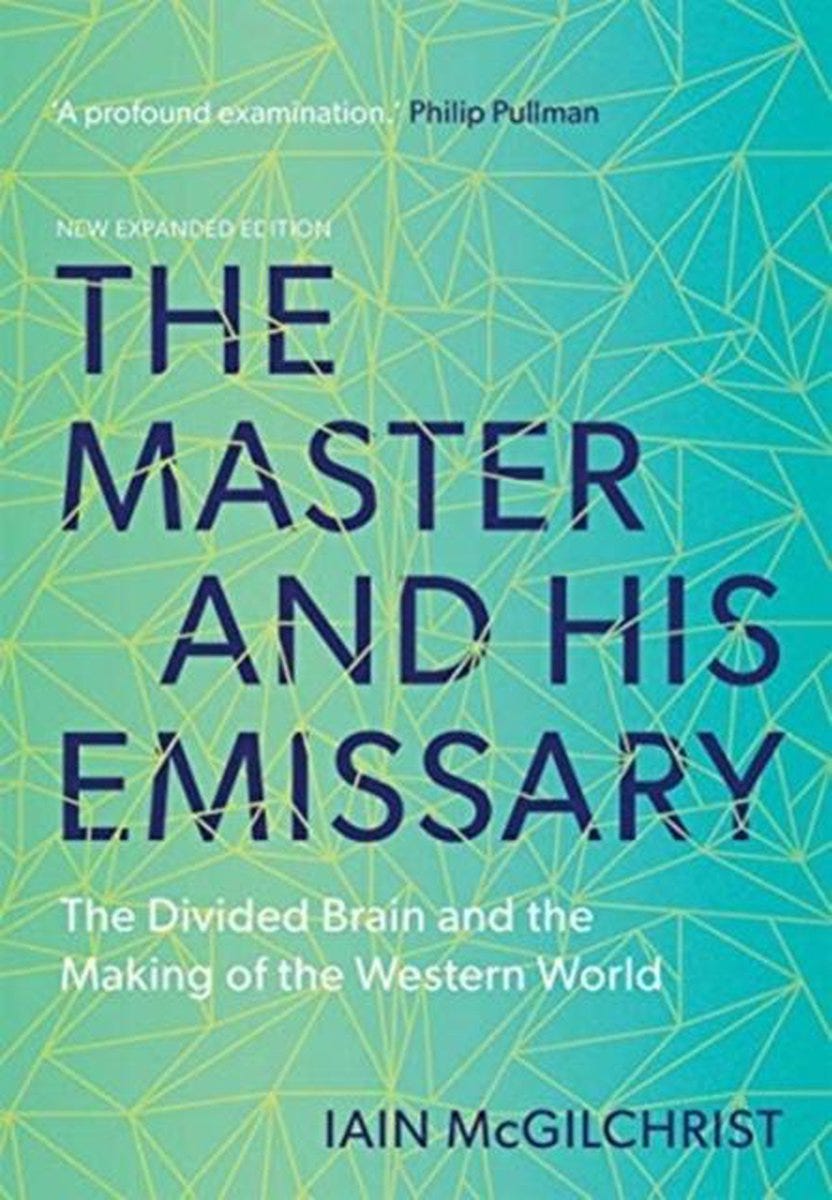

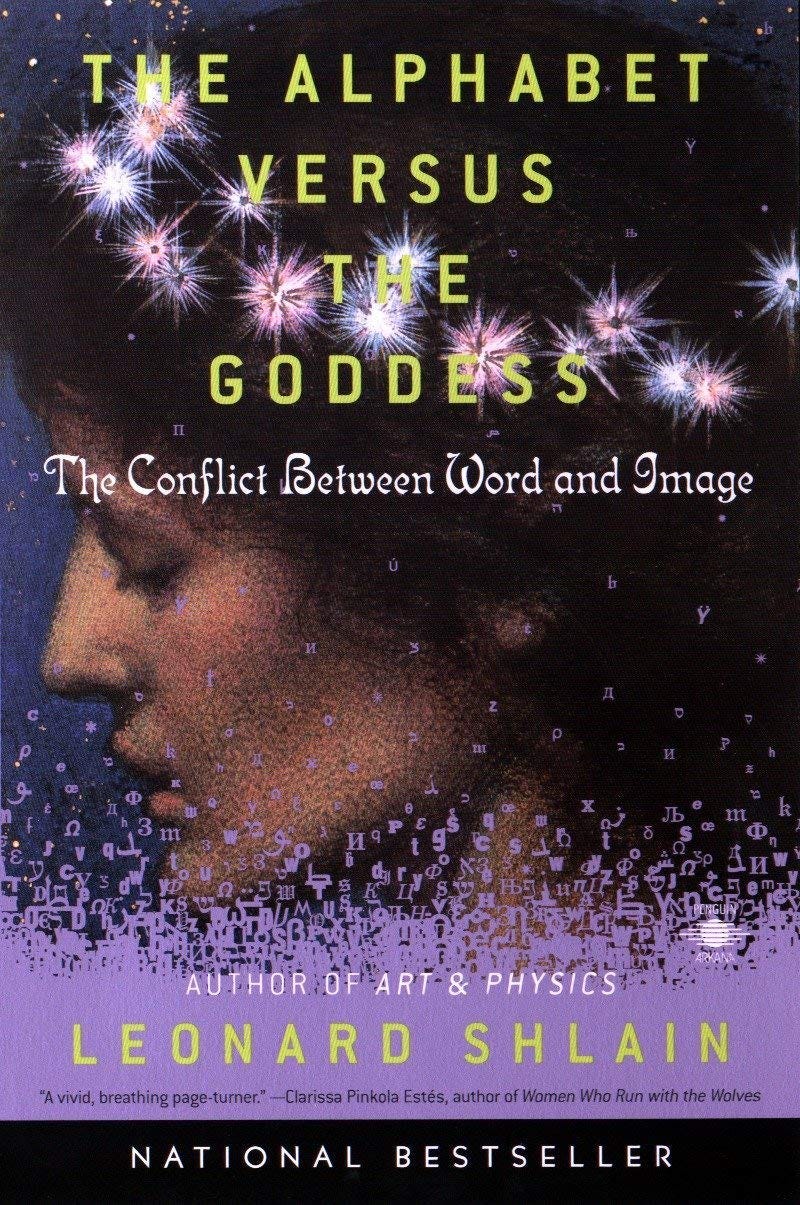
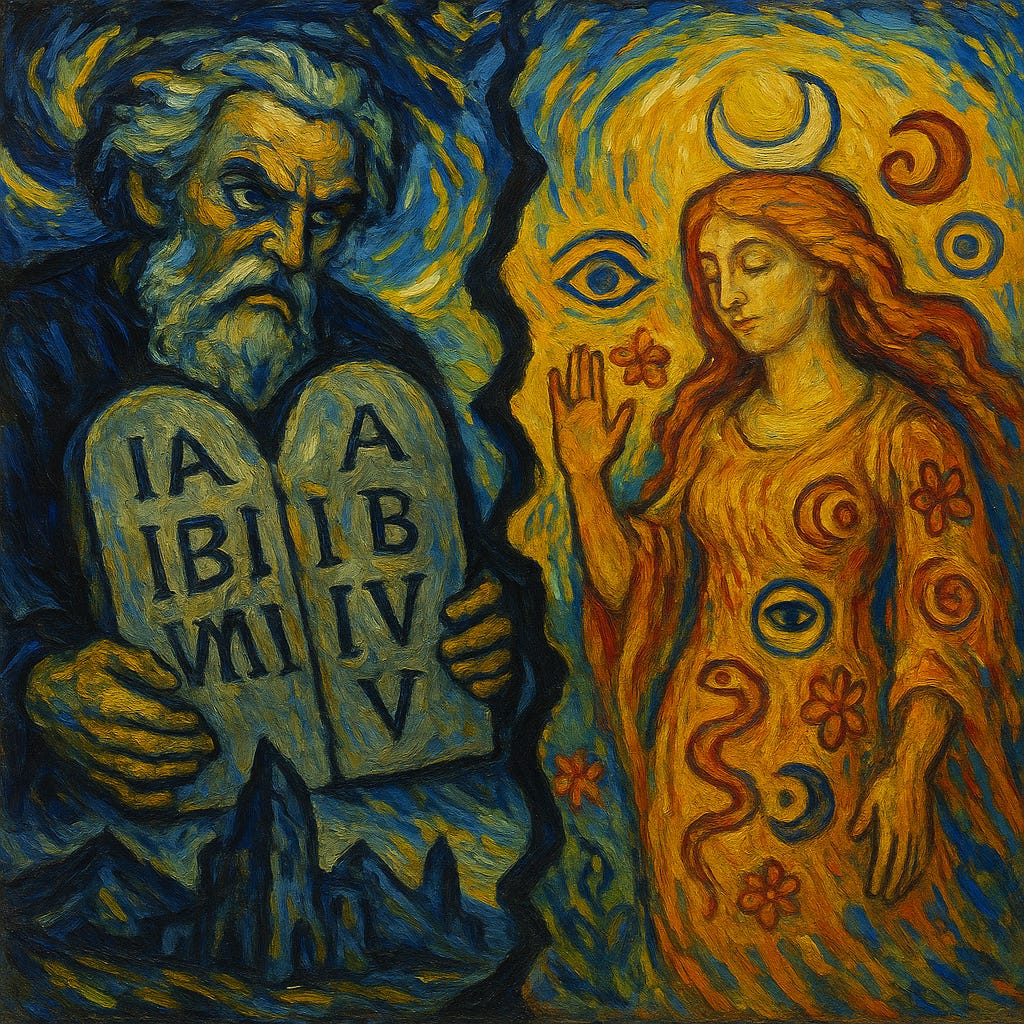
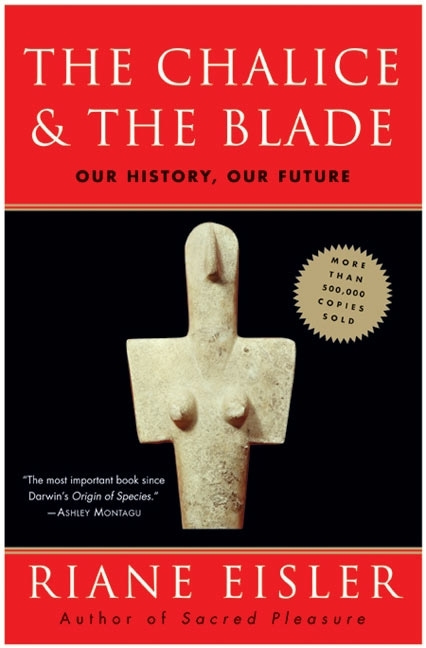
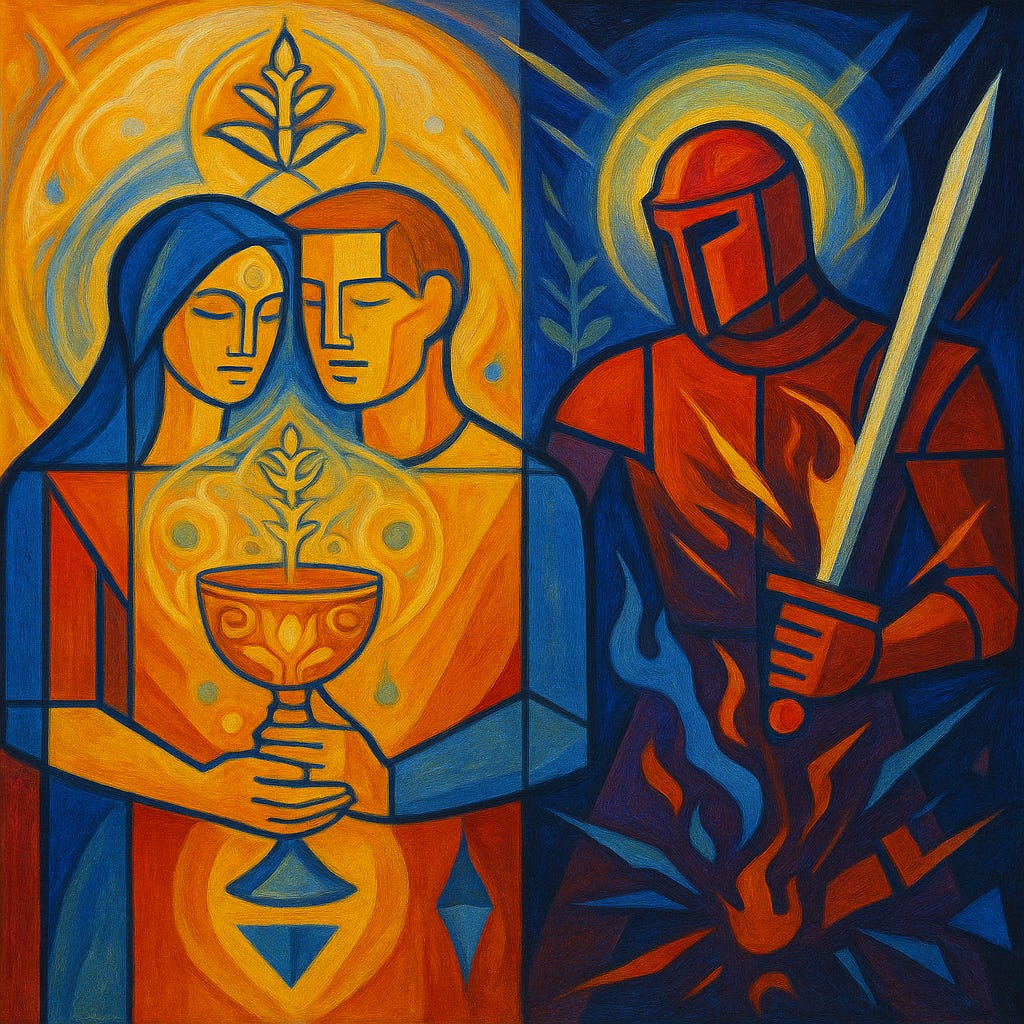








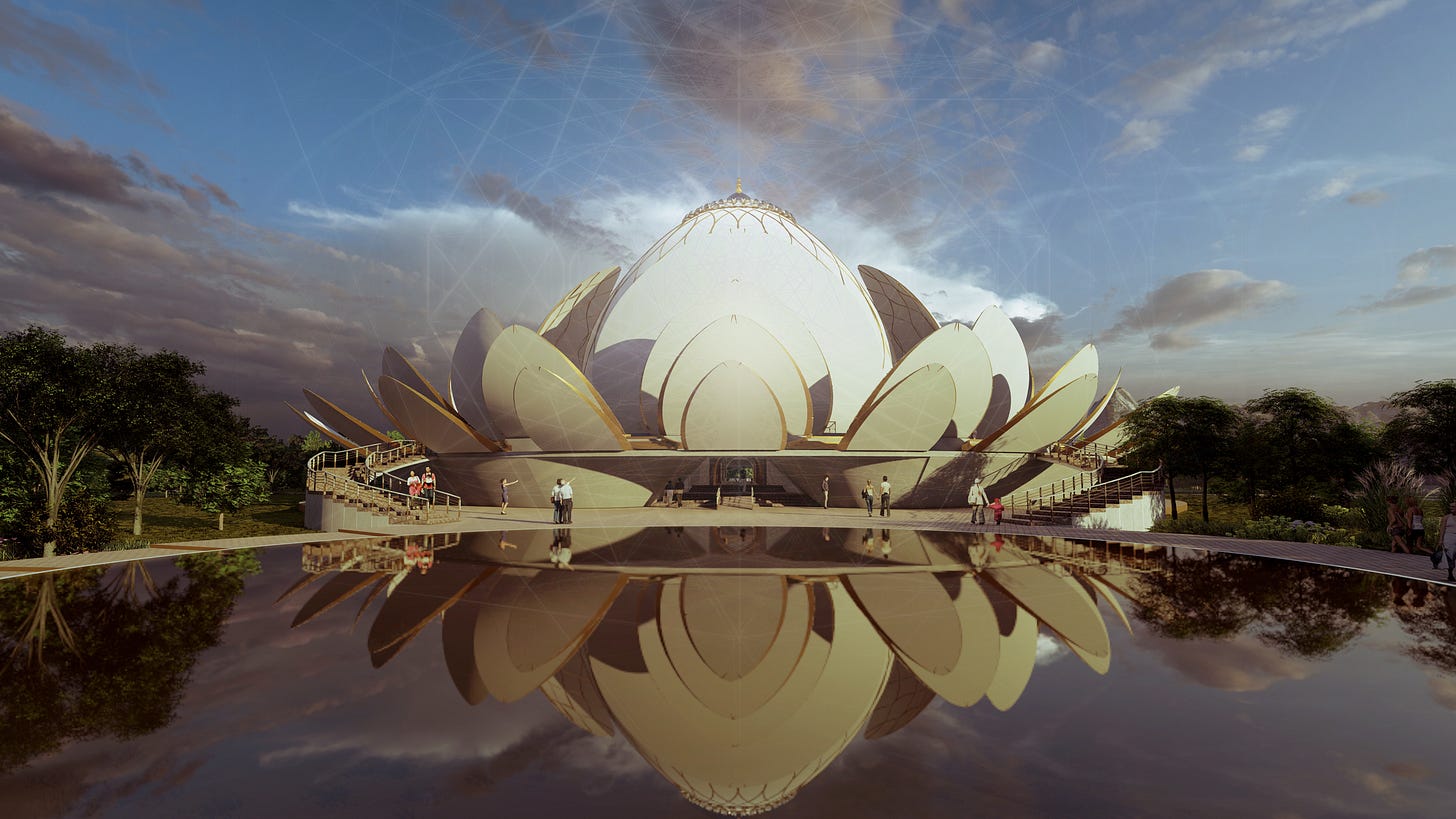
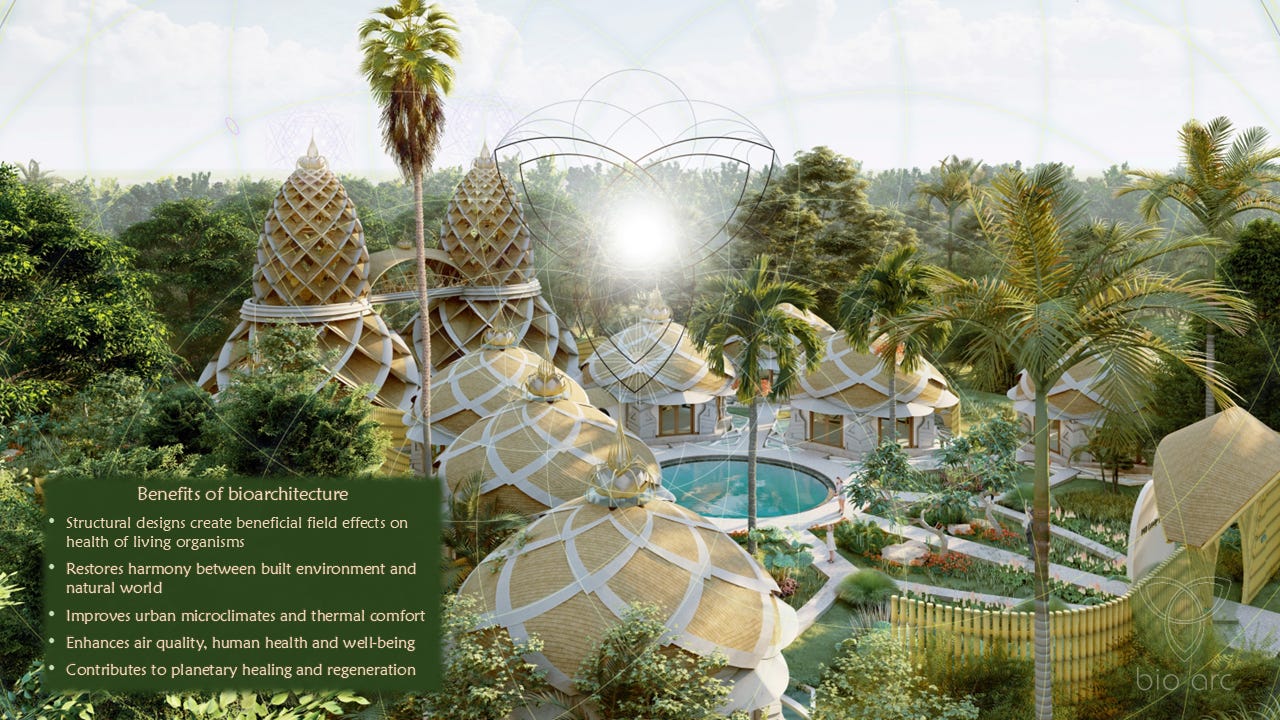




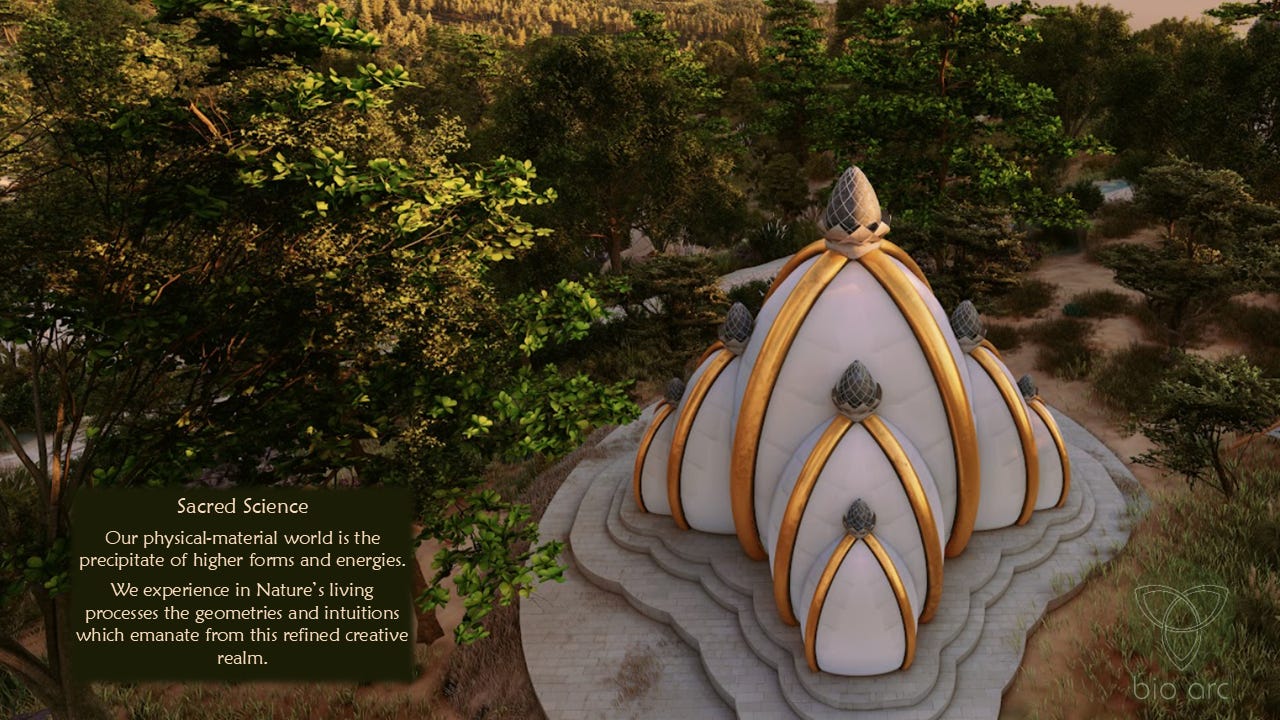






Thomas-thank you for skillfully and artistically describing humanity’s journey from our experience of being embedded in the matrix, to standing outside it and being mystified by the world and ourselves, and our happy story of reintegration currently unfolding.
The soul is in an epic struggle right now as many destructive forces are at work to derail our progress. Your ability to articulate and communicate our journey provides a welcome way shower through the chaos.
I understand why people think grimoires represent different parts of the brain and how some need reworked for gender balance.